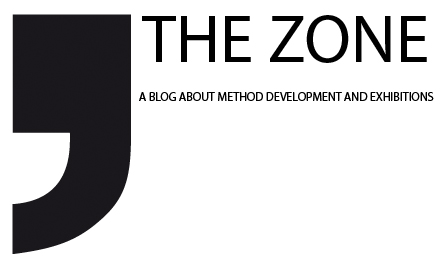
Photographer: Darwin Bell
My work at Swedish Travelling Exhibitions (STE) means that I shift beween discussions about culture politics on an international level to hands-on method development for visitors in exhibitions.
Last Friday we published a "Pedagogical guide book on moving images" which has been produced by my unit in STE, Tour production and Pedagogy.
The Gudie book is meant as an aid for everyone working pedagogically with moving images or art videos and who is in need of a guide about how to work pedagogically with these things. The Guide book contains a theoretical cheatsheet for workshops about art videos, but also how to use the mobile phone as a multimedia tool to make your own art video. In the Guide book we open up for some of Sweden´s art pedagogues and artists who have been doing this for a long time.
Ann- Sofie Roxhage and Elenor Noble have through their work as gallery teachers at Gothenburg Art Gallery, Röda Sten and other art institutions in the Gothenburg area, over a period of 5 years developed their "Cheatsheet on how to view and experience contemporary art". The cheatsheet was part of the pedagogical material that was produced for the 2009 Gothenburg Biennale.
Anders Weberg is an artist working with video, sound and installations where he, above all, uses the mobile phone as a tool. In the Guide book he provides tips and ideas on how to use this multimedia tool, now in everyone´s pockets, to create your own art.
Johanna Sjöström, curator at the Art museum in Gothenburg, provides a summary of the history of moving images and Karolina Westling, film pedagogue and media scientist at The University of Gothenburg, provides an entrance to the moving image as a pedagogical tool.
For those interested the Guide book can be ordered from STE, though it only exists in Swedish. The purpose of the book is to make it easier and improve practice for everyone working with moving images and art movies.
To me, being responsible for the pedagogical development at STE, the Guide book serves several aspects;
- It meets a pronounced need in the exhibition sector.
- It provides space for external voices to present their knowledge and line of work.
- It is produced by persons in my unit and others at STE without my contribution which will give them a boost.
- It turns our pedagogical policy document into practice.
The Guide book was released in connection with a seminar and workshop in Landskrona, in the south of Sweden. The seminar attracted som 50 people working with moving images and art videos, in art galleries, museums, schools, youth clubs and so on. A great mix of people which also showed that this type of pedagogical material is wanted far beyond the exhibition sector. More of this!
Hugs!
Göran

